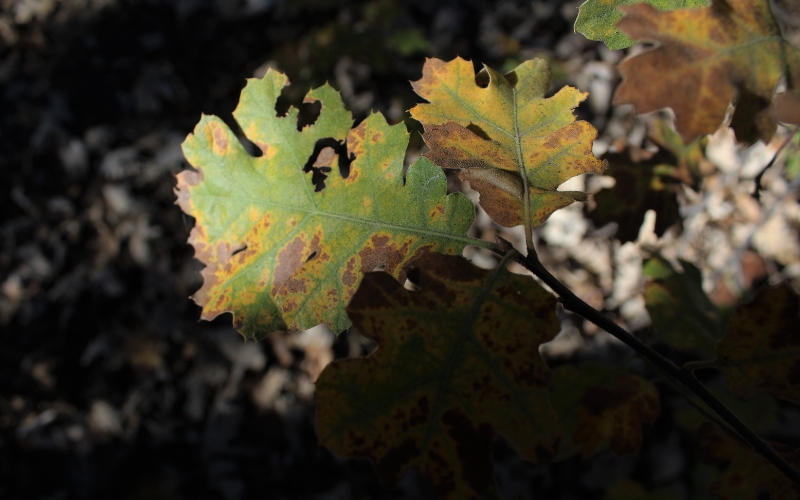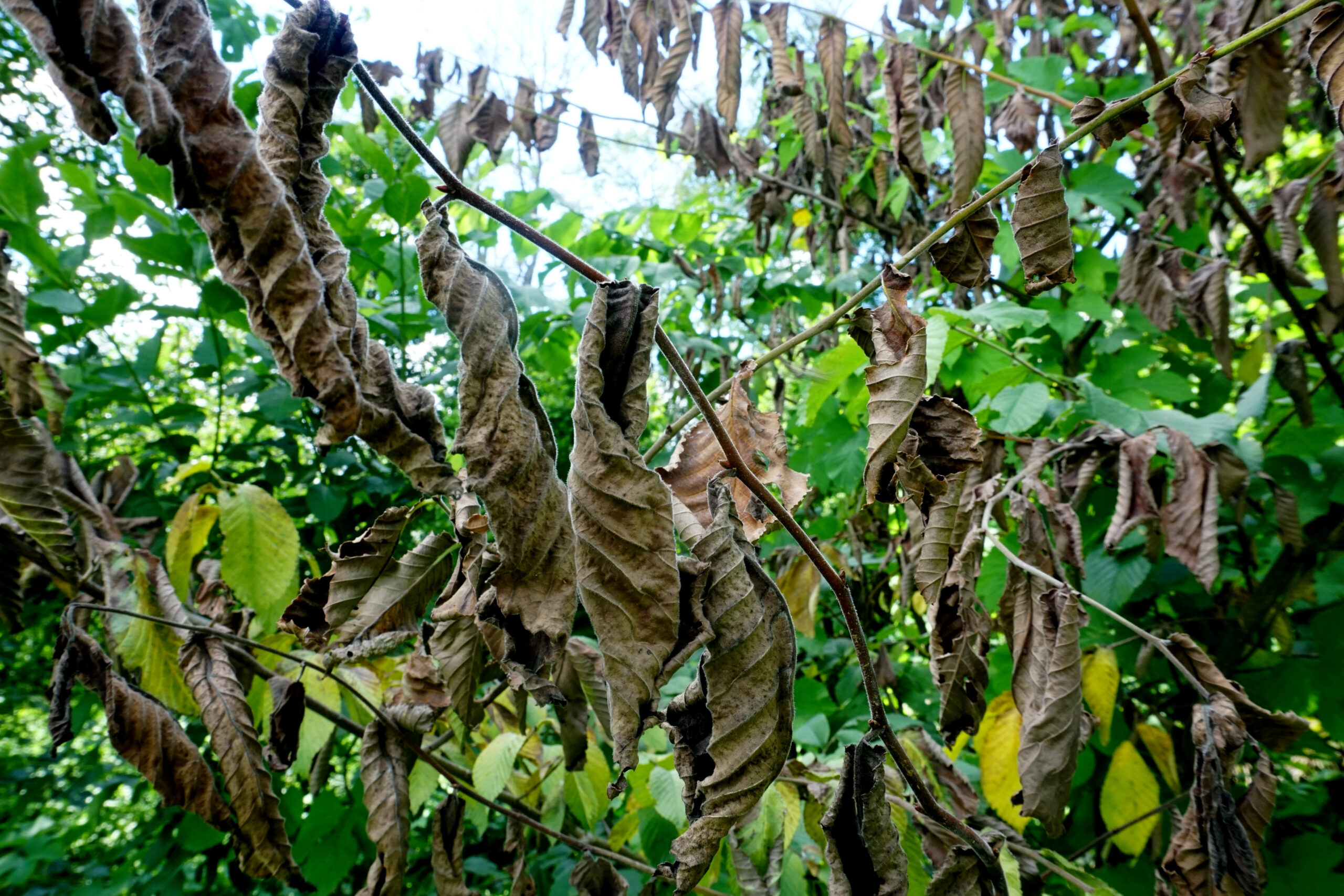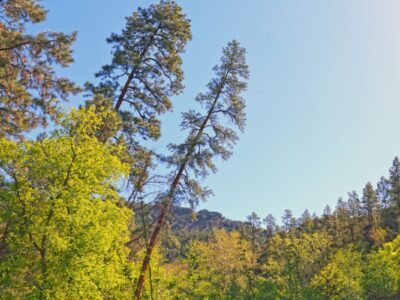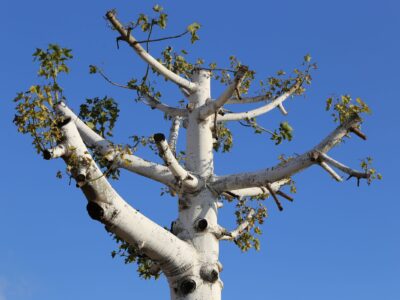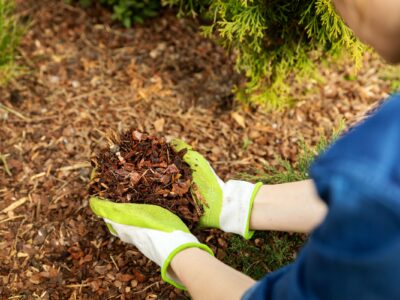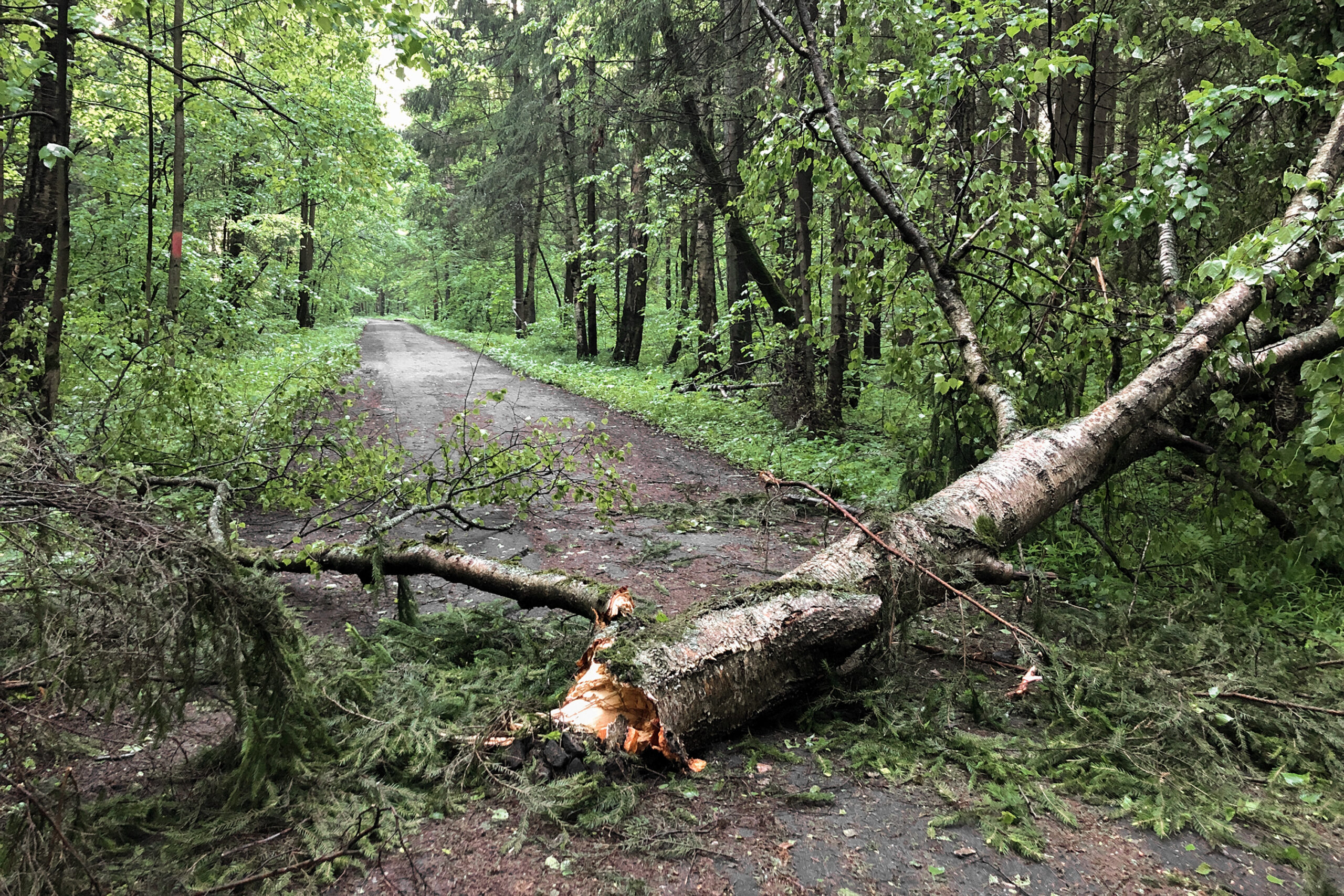Winston-Salem’s Tree Troubles: A Guide to the 4 Most Common Fatal Tree Diseases
May 23, 2024
Worried about fatal tree diseases in Winston-Salem? Learn how to identify the 4 most common threats to our city’s trees
The beautiful trees of Winston-Salem, NC, line our streets, parks, and backyards. They provide shade, beauty, and even boost our property values. But unfortunately, trees of all kinds face a serious threat – fatal tree diseases. These diseases attack trees of all ages, devastating our urban forests.
In this article, we’ll tackle the most common – and lethal – tree disease threats in our area and what we can do to protect our Winston-Salem trees.
Key Takeaways
- The four most common and fatal tree diseases killing Winston-Salem’s trees are bacterial leaf scorch, oak wilt, Dutch elm disease, and armillaria root rot.
- Identifying the early warning signs of these diseases is important to prevent them from spreading.
- If you suspect one of these diseases is affecting your trees, it’s important to call a certified arborist for a professional diagnosis and possible treatment.
- Prevention is the best option, as these diseases are incurable.
Four Fatal Tree Diseases in Winston-Salem, NC
From the vibrant springtime blooms of our dogwoods to the bountiful harvests of our apple orchards, Winston-Salem has a large diversity of trees. Sadly, this also makes our trees susceptible to a wide range of diseases.
Some of the most common and destructive tree diseases plaguing our forests are:
- Bacterial leaf scorch
- Oak wilt
- Dutch elm disease
- Armillaria Root rot
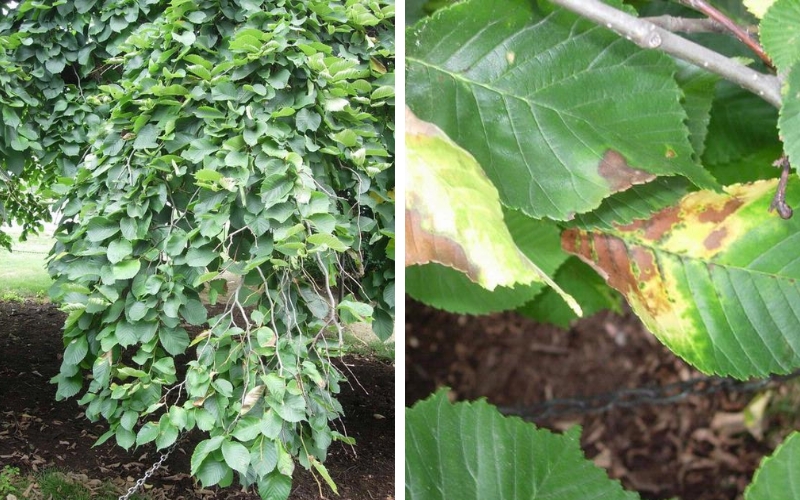
Left to right: An elm tree with bacterial leaf scorch; close up of BLS on elm leaves, both photo by Elizabeth Bush, Virginia Polytechnic Institute and State University, Bugwood.org
Bacterial Leaf Scorch
Bacterial leaf scorch affects many shade trees, including maple, oak, elm, sycamore, and sweetgum. This disease is caused by the bacterium Xylella fastidiosa and resides in the xylem tissue of the host plant.
People often confuse bacterial leaf scorch with symptoms of drought or heat stress because of the way the leaves turn completely brown and drop prematurely. However, this disease causes a distinctive dull red to brown appearance with a yellow or reddish-brown halo or line that separates the dead and healthy leaf tissue.
Symptoms of Bacterial Leaf Scorch
You’ll most likely see bacterial leaf scorch appear in mid-to-late summer, when trees are already stressed from heat and water demands. Unlike drought stress, which typically affects younger leaves at the top of the tree first, bacterial leaf scorch starts on the edges of older leaves on the lower branches, progressing inwards and upwards.
Can Bacterial Leaf Scorch Be Cured?
Unfortunately, there is no cure for a tree suffering from bacterial leaf scorch. This disease causes the slow decline of trees, typically over several years. However, removing branches that have become infected may help slow the rate of decline and prevent the bacteria from spreading further throughout the tree’s vascular system.
Oak Wilt
Oak wilt, caused by the fungus Bretziella fagacearum, is a devastating fungal disease that specifically targets oak trees. Like Dutch elm disease, oak wilt disrupts the water transport system within the oak tree. If water can’t reach the branches or leaves, they die.
How Oak Wilt Spreads
When an oak tree dies from oak wilt, black or grey fungal mats form under its bark. Sap-feeding beetles pick up spores from the infected trees and unknowingly carry them to wounds on healthy oak trees, introducing the disease. Another way oak wilt is spread is through the underground root grafts that connect to nearby trees. These root grafts allow trees to share water and nutrients, and unfortunately, diseases, too.
That’s why it’s so important not to prune trees and quickly cover any open wounds during the season when beetles are active.
What to Do if You Suspect Your Tree Has Oak Wilt
If you have a tree that is rapidly wilting, browning, or suffering from leaf death in the upper crown of the tree, it’s important to act fast to save the surrounding oak trees. Oak wilt is highly destructive, and infected trees can die within a few weeks to a few months, depending on the species and the tree’s health.
A certified arborist can help sever root grafts between trees, remove the infected trees, and give fungicide treatments to nearby trees showing early signs of oak wilt.
Dutch Elm Disease
Dutch elm disease is caused by two aggressive fungi, Ophiostoma ulmi and Ophiostoma novo-ulmi. It disrupts an elm tree’s vascular system, cutting off the water and nutrient supply to the rest of the tree.
With the help of elm bark beetles, this disease spreads like wildfire. As the beetles feed on infected elm trees, they unknowingly pick up fungal spores, carrying them to healthy trees that then become infected. Even worse, Dutch elm disease can also travel underground through root grafts that connect to nearby elm trees.
Symptoms of Dutch Elm Disease
Wilting and yellowing of the leaves on a single branch is typically the first subtle sign of this disease. That’s because as the disease spreads, it disrupts water movement, causing the tree to dry out and the leaves to wilt. The leaves eventually turn brown, curling up as the branch dies, and spreading throughout the entire tree.
Can You Treat Dutch Elm Disease?
The sooner you call a certified arborist, the better chance your elm tree has. A certified arborist can apply insecticides to help control the elm bark beetle population and slow the spread of the disease. They can also potentially save your elm by pruning the affected branches or injecting fungicide treatments directly into the tree.
Armillaria Root Rot
Tree roots are like the lifeline of a tree, absorbing water and nutrients from the soil. Root rot is exactly what it sounds like – a fungal disease that attacks the roots of the tree, causing them to decay and die.
Unfortunately, root rot happens to be one of the most diagnosed disease problems in North Carolina. The three most common types are Phytophthora root rot, Thielaviopsis black root rot, and Armillaria root rot.
The main cause is the fungal pathogens that develop in saturated soil. With average rainfall in Winston-Salem being over 42 inches a year, this doesn’t come as a surprise.
The early signs of root rot are often confused with other problems. So, it would help if you kept an eye out for:
- Wilting or yellowing of the leaves
- Stunted growth
- Canopy with fewer leaves than usual
- Premature fall coloring of leaves
- Visible signs of fungal growth on the roots if the base of the tree is exposed
Because the fungi most commonly responsible for root rot, Armillaria, can survive for many years in the soil or in old stumps, even removing dead trees might not be enough. This is why proper care and preventative measures are important for protecting our trees.
Armillaria Root Rot Prevention Tips
The good news is that Armillaria root rot can be easily prevented using proper watering techniques. Avoid shallow, frequent watering and instead, practice deep infrequent watering. This encourages roots to grow deeper into the soil, away from the fungus that thrives in constantly moist conditions.
How to Protect Your Trees from Common Diseases
Trees are great for providing shade, beauty, and cleaner air. But just like us, they can fall victim to various diseases if they aren’t cared for properly. The good news is there’s a lot we can do to protect our trees!
- Planting the Right Tree in the Right Place: Different trees have different needs for sunlight, soil drainage, and moisture. Choosing the right tree for your specific location sets it up for success and reduces stress, which can make it more susceptible to disease.
- Proper Watering: Overwatering and underwatering can both stress trees and make them vulnerable to disease. Learn how much water your tree needs based on its species and the season (ask your arborist at Godspeed Tree Service!).
- Mulching: A layer of mulch around the base of your tree helps retain moisture, regulate soil temperature, and suppress weed growth. Organic mulch has added benefits as well! However, avoid piling mulch directly against the trunk, which can promote rot.
- Professional Pruning: Regular pruning removes dead, diseased, or overcrowded branches. This improves air circulation within the canopy, reducing moisture that can encourage fungal diseases.
We Aren’t Out of the Woods Yet – Why Winston-Salem Needs to Stay Vigilant
We’ve covered the four most destructive tree diseases in Winston-Salem. But that doesn’t mean there aren’t other trees in North Carolina that are quickly succumbing to other devastating diseases.
Laurel wilt and white pine dieback have both been found relatively close to Winston-Salem and are continuing to spread quickly across the state.
With changing weather patterns, warmer temperatures, and more frequent storms, these diseases have the potential to reach Forsyth County within the next few years. Plus, droughts are not only putting our forests at risk of wildfires, but also increasing the chances of tree stress, making them less resilient against pathogens and pests.
So, what can we do? Don’t panic, stay vigilant and follow these best practices:
- Inspect your trees regularly for signs of disease, such as wilting leaves, discoloration, unusual growth, or oozing sap.
- Water and fertilize your trees properly.
- And, most importantly, if you notice something isn’t quite right with your tree, call a tree care company or local certified arborist.
By taking these steps to keep your trees healthy, we can all work together to protect Winston-Salem’s beautiful urban forests.
Your Trees Deserve the Best Disease Protection – Call Godspeed Tree Service
Understanding tree health is only part of the battle. To help save our trees from these fatal diseases, you need someone with the expertise and tools to fight back.
For more than 25 years, Godspeed Tree Service has been helping property owners in the Winston-Salem area care for their trees. You can trust that our team is equipped with the knowledge, experience, and tools necessary to effectively prevent and treat tree disease.
Let us help protect your property from further damage and decay – call Godspeed Tree Service at 336-399-8348 or use our convenient online form to request a quote today!

Godspeed Tree Service
Owned and operated with high standards and consistent reliability by Bobby Gates, Godspeed Tree Service has earned the trust of the North Carolina Triad community over the course of more than 25 years in business. With a strong emphasis on safety, conscientious training, and accommodating the needs of each client, you can't go wrong by hiring Godspeed for any of your tree service needs!
